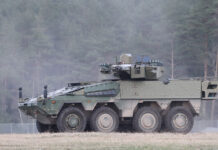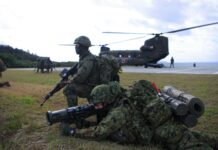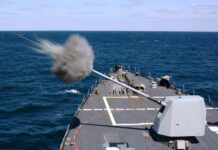Australia is in the midst of an extensive programme aimed at procuring the next generation of small arms for its land forces. Thus far, several new weapons at the lighter end have already been selected, but many choices remain at the heavier end of the spectrum.
LAND 159, otherwise known as the ‘Lethality System Project’, has, according to the Australian Department of Defence, the objective to: “Equip the Australian Defence Force (ADF) with next-generation weapon systems, surveillance and target acquisitions ancillaries, ammunitions, facilities and training and support systems. The Lethality System Project will ensure ADF ground combatants maintain a capability advantage over potential adversaries to beyond 2030.” The Lethality Systems Project is a comprehensive series of small arms and support weapons acquisition programmes in a multitude of categories, and is broadly divided into three tranches.
Tranche 1 is divided into two separate capability streams, the ADF Sniper System and the ADF Close Combat System. The ADF Sniper System consists of a medium-range anti-personnel sniper capability, a long-range anti-personnel sniper capability, an anti-materiel sniper capability, a sniper surveillance capability and what is described as a ‘Sniper Soldier Combat Ensemble.’ The ADF Close Combat System consists of what is described as a ‘Low Profile Weapon System,’ a sidearm weapon system, a hand-to-hand combat system (fighting knife), a shotgun system and an assault breeching system. Tranche 1 is expected to run from FY 22/23 through to FY 24/25.

Credit: Australian DoD
Tranche 2, which is expected to run from FY 24/25 to FY 26/27, also consists of three other separate capability streams, the first of which is a close combat assault rifle, this would replace the Thales Australia EF88 5.56 × 45 mm system currently in service. The second capability stream is for a family of machine guns, a light machine gun, a medium machine gun and a heavy machine gun. The light machine gun will replace the FN MINIMI (F89) in 5.56 × 45 mm and the MAXIMI in 7.62 × 51 mm, the medium machine gun will replace the FN MAG (GPMG) in 7.62 × 51 mm and the heavy machine gun will replace the Browning M2HB in 12.7 × 99 mm (.50 BMG).
The third capability stream in Tranche 2 is for a Direct Fire Support Weapon and a family of grenades. This covers a short-range direct fire support weapon, in this context an M72 Light Anti-Tank Weapon (LAW) replacement, as well as a medium-range direct fire support weapon to replace the CARL GUSTAF M3. With regards to the latter, the Australian Army was conducting tests with the CARL GUSTAF M4 in 2021. There is also a requirement for a long-range direct fire support weapon, which will most likely be a missile system, given the Australian Army currently operates the JAVELIN system in this application. Also required is a lightweight mortar, this would replace current 60 mm and 81 mm mortar systems. The last element to be considered is the acquisition of a new family of grenades, this would replace the F1 fragmentation grenade, and other types required would include different types of smoke, stun, anti-riot agents and incendiary natures, amongst others.
The last element to be considered is Tranche 3 which is expected to run from FY 26/27 to FY 28/29. This consists of two separate capability streams, the first covers munitions including a lightweight automatic grenade launcher (AGL), as well as less-than-lethal munitions and command detonated munitions. The last capability stream covers what are called ‘Emergent Weapons,’ requirements in this area are for unmanned weapon systems and loitering munitions.
Tranche 1 Contract Award
The path to the contract award for Lethality System Project (LAND 159) Tranche 1 was actually rather interesting as the Australian authorities looked to generate a different kind of acquisition process that had something described as ‘strategic and innovative contractual arrangements,’ in a Request for Information (RFI) issued in November 2017. Then in January 2019, a Request for Proposals (RFP) was released that sought “innovative Supplier Engagement Model solutions for the delivery and support of capability.” In June 2019 three companies had been selected as potential industry partners for the programme, with the next stage of the process being a response to a Limited Request for Tender (LRFT).
Eventually NIOA were appointed as prime contractor, their responsibility was to deliver the first stage of the Tranche 1 project. NIOA describes itself as: “Australia’s largest fully privately-owned prime contractor for the supply of weapons and munitions for ADF, NZDF and selected Law Enforcement markets.”
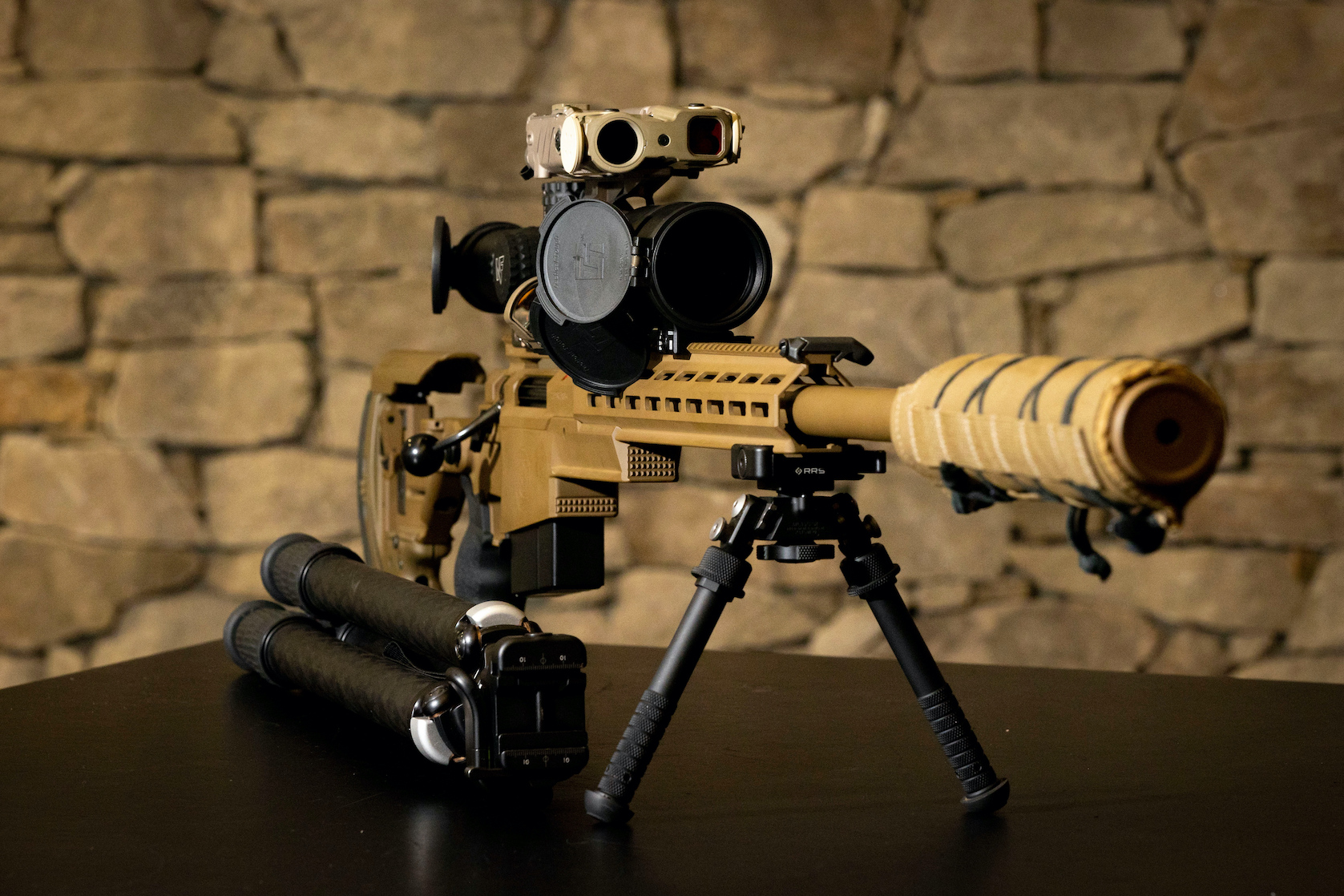
Credit: Australian DoD
For the Lethality Systems Project, NIOA worked with Defence Australia, providing such services as requirements analysis, identifying suitable solutions to the requirement and evaluating proposals from contractors. In terms of this project, NIOA will act as prime contractor, with the weapon system suppliers as sub-contractors. NIOA is also playing a major role as Australia seeks to develop sovereign capability in critical areas. They have a joint venture company with Rheinmetall, Rheinmetall NIOA Munitions (RNM), which is manufacturing artillery projectiles domestically and more recently have announced a teaming arrangement with Diehl, under which NIOA will manufacture Diehl’s family of 127 mm naval ammunition in Australia, following a technology transfer programme.
Selected Systems
The Long Range Anti-Personnel (LRAP) Sniper Capability requirement saw the selection of the Accuracy International AX-SR, which will be used in a multi-calibre format, with .338 Lapua Magnum (8.6 × 70 mm), .300 Norma Magnum (7.83 × 64 mm) and 7.62 × 51 mm NATO available. The Anti-Material (AM) Sniper Capability will be met by the Barrett M107A1 in 12.7 × 99 mm (.50 BMG). The Sniper Surveillance Capability will see the acquisition of Safran JIM multifunction infrared binoculars and Steiner laser rangefinding binoculars.
The Sidearm Weapon System is to replace the Mk3 version of the Browning Hi-Power pistol, the base variant of which was originally designed by John Browning for FN in Belgium to meet a French military requirement in the early 1920s. Browning was assisted by Dieudonné Saive, who would later go on to design the FN FAL, who designed the magazine for the new weapon. After Browning’s death in 1926, the design rights for the new pistol was sold to FN and Saive continued to develop the pistol. With the expiry of the patents held by Colt on the M1911pistol, another Browning design, Saive was able to combine the features of both pistols to create the Hi-Power.
Although it was the French Army requirement that led to the genesis of the Hi-Power, it was Belgium that became the first military customer in 1935. This 9 × 19 mm calibre pistol would remain in production at FN until 2018. Good though the Hi-Power was, pistol design has moved on, hence Australia’s need for a newer weapon. The system selected was the SIG Sauer P320 XCarry Pro, again chambered in 9 × 19 mm. The P320 also provides the basis for the M17/M18 US Army Modular Handgun System (MHS), with the MHS being adopted in 2017.
The Combat Shotgun System requirement was met by the Benelli M3A1 and this will replace the existing Remington 870. The Hand-to-Hand Fighting System requirement will be met by Australian company ZU Bladeworx’s Double-Edged Fighting Knife. The last significant element of the of the Lethality System Project (LAND 159) Tranche 1 contract is the Personal Defence Weapon (PDW) System. This requirement has been awarded to the SIG Sauer MCX which will chambered in the .300 Blackout (.300 BLK) cartridge.
The MCX in .300 BLK (7.62 × 35 mm) is an interesting choice for PDW, but it is a choice that has been gaining traction in recent years, especially amongst Special Forces. Earlier this year, United States Special Operations Command (USSOCOM) selected the SIG Sauer MCX RATTLER to meet its PDW requirement, with the weapon to use two calibres in the form of 5.56 × 45 mm and .300BLK. Back in 2015 the Netherlands issued a requirement for a PDW in .300BLK for Special Forces, selecting the SIG Sauer MCX in late 2016. British Special Forces also use the MCX in .300BLK.
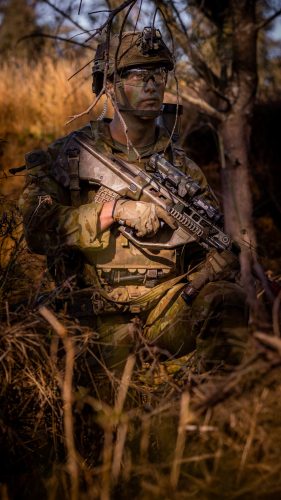
What Next?
It will be interesting to see how the Australians decide to proceed in Tranche 2 of the Lethality System Project, specifically as regards the Close Combat Assault Rifle and the Family of Machine Guns. They can take the safe route and stick to the standard 5.56 × 45 mm and 7.62 × 51 mm cartridges, although they could also opt for composite-cased rounds to reduce ammunition weight, such as those offered by True Velocity, which are reportedly being evaluated in Australia. For 12.7 × 99 mm, NAMMO offer the MAC polymer cased round, which is up to 30% lighter than conventional rounds. These polymer-cased rounds are already being used by the US military.
Another alternative is to look at the US Army Next Generation Squad Weapons (NGSW) programme awarded earlier this year, consisting of an M4/M4A1 carbine replacement in the form of the Next Generation Squad Weapon-Rifle (NGSW-R) and a replacement of the M249 Squad Automatic Weapon (SAW), US version of the MINIMI, in the form of the Next Generation Squad Weapon-Automatic Rifle (NGSW-AR). SIG Sauer won the programme with the XM5 selected for NGSW-R and the XM250 for NGSW-AR, both of which use the new US 6.8 × 51mm Common Cartridge, with its hybrid metallic case. Then comes the question of which calibre to opt for in a future medium machine gun?
The Lethality System Project represents a comprehensive effort to modernise Australia’s small arms capabilities. With the Tranche 1 underway, the focus will shift to the much more complicated capabilities to be acquired under Tranche 2. This will represent a much more challenging task in formulating requirements and selecting the systems to meet those requirements.
David Saw




